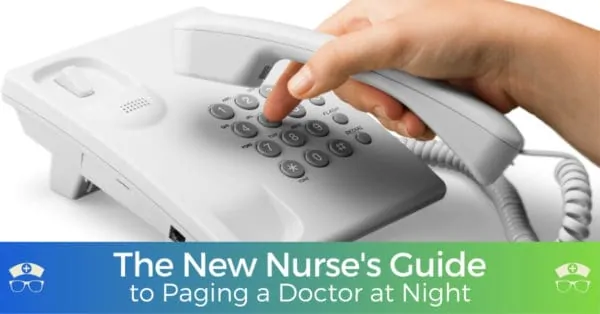A hospital code blue is a terrifying experience as a nurse. It’s stressful for experienced nurses and those on the code team, but even more for inexperienced or new nurses. Let’s look at what code blue is and how to respond as a nurse so that you are prepared.
What is a Code Blue?
A code blue is called when a patient experiences unexpected cardiac or respiratory arrest that requires resuscitation and activation of a hospital-wide alert.
These cardiac or respiratory arrests are handled by the “code team” of the hospital. However, if a nurse is nearby, he or she will have to step in and begin immediately until the code team arrives.
There is Code Blue training for nurses so they can learn how to properly and quickly respond to these codes. If you haven’t taken one of these pieces of training, look for one near you.
When to Call Code Blue
The decision to call a code blue will happen in a matter of seconds, so you have to think fast. You will know to call a code blue when the patient isn’t pumping the oxygenated blood they need to survive due to cardiac or respiratory arrest. In other words, if their heart stops pumping or they stop breathing.
Before you call a code, make sure and do a quick assessment. Look for a pulse and signs of breathing. If either of these isn’t happening, that’s when you call a code blue.
When you call a code blue, the code team will respond. Keep attempting to resuscitate the patient until they arrive.
Role of Responders During a Code Blue
When someone calls a code blue, the following people will respond and begin the process of trying to revive the patient.
Here is what the first responders to a code blue will do:
- Call for help.
- Drop the head of the bed and remove the pillows so the patient is flat on the bed.
- Check the carotid pulse.
- Begin chest compressions.
- Bring the e-cart and other emergency equipment to the site.
- Put the backboard under the patient.
- Clear and manage the patient’s airway with an ambu bag or a pocket mask with a one-way valve.
- Turn on the AED/defibrillator and use it for pulseless patients.
- Verify that IV fluids and emergency medications are ready.
- Document everything.
Always check with your hospital and make sure you know their exact code blue procedures in case they are different from what is listed in this article.
Who is on the code team?
Your hospital might have different members on the code team. More often than not, these are the people that make up the code team.
- Physician – typically the leader
- Unit RN
- Critical Care/ICU RN – might serve as the code team leader until the doctor arrives
- Pharmacist
- Respiratory Therapist – manages airways and respiratory assessments
- Clinical Supervisor – the person in charge of communication between the physician and the patient’s family
- ED Techs
What to Do as a Nurse During a Code Blue
Now that you know what a Code Blue is and who is going to respond let’s look at what you should do as a nurse during a code blue.
The most important thing of all is to stay calm and think quick. Mistakes could be costly, so take a deep breath and make sure you are doing the right things.
1. Practice First
Seek out opportunities to walk through mock code blues. Every chance you have to practice will make it so that your body and mind know what to do even when you are under the stress of the real thing.
2. Help Out During Code Blue
The best way to learn is to help out during a code. Keep in mind that if you have no idea what to do, it might be best to stay out of the way. But if you went through training and you know the procedures, begin helping. It will give you priceless hands-on experience.
3. Let the Doctor Be in Charge
Respect their authority and follow their lead. Your job as a nurse is to support them and the team. This might mean giving chest compressions or running and grabbing essential tools and supplies. When a code is called the doctor might use a defibrillator to shock the heart and make it pump again. There are also medications that they can give.
4. Ask for Feedback
Finally, it’s important to ask for feedback from the team afterward. What did you do right? What can you work on? Take this advice to heart and hone your skills so you can be a more valuable team member next time.
What Not to Do During Code Blue
Just like there are some things you should always do, you need to remember the things to avoid too. A hospital code blue can be a very stressful event, so follow some simple rules for the best outcome.
1. Do Not Yell
Keep your voice level and calm. It’s a very tense and stressful situation already, using a loud or excitable voice will only increase the anxiety and noise level of the room.
2. Do Not Guess
If you don’t know what to do, let someone else step in. This is not the time to make a guess and hope it is right.
3. Don’t Leave When the Team Arrives
Just because the code team is in the room doesn’t mean you get to leave. This is your patient and you were the last medical professional with them. They might have questions for you or need your help. Stay in the room.
4. Don’t Switch Roles
Communication is extra important during this critical time. If you are completing a task or in charge of a part of the process, don’t switch unless you communicate clearly and have someone take over for you.
Code Blue on DNR Patients
If you have a DNR patient, you won’t call a code blue. Typically, these patients have legal papers that say they don’t want cardiopulmonary resuscitation (CPR) or advanced cardiac life support (ACLS).
How will you know if a patient is DNR? It should be noted in their charts. Some hospitals will also put this information on their wristband.
Stay Calm and Help Out
If you haven’t received any training yet, look for Basic Life Support (BLS) and Advanced Cardiac Life Support (ACLS) in your state. Learn what to do so that when it happens, you will be able to act quickly and efficiently.
Above all, stay calm and rely on the procedures your hospital has in place.
More Info You Need to Know
Here are some more tips and advice for nurses working on the floor with patients.
- A Patient’s Family During a Code
- What Does a Cardiac Nurse Do?
- What is Nursing Informatics?
- The Ballet of V-Fib: A Glimpse into the World of a Cardiac Critical Care Nurse
Code Blue











